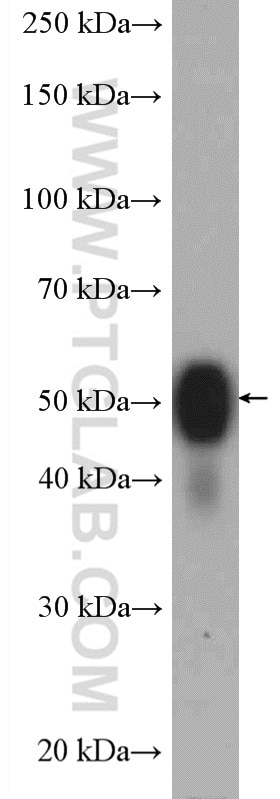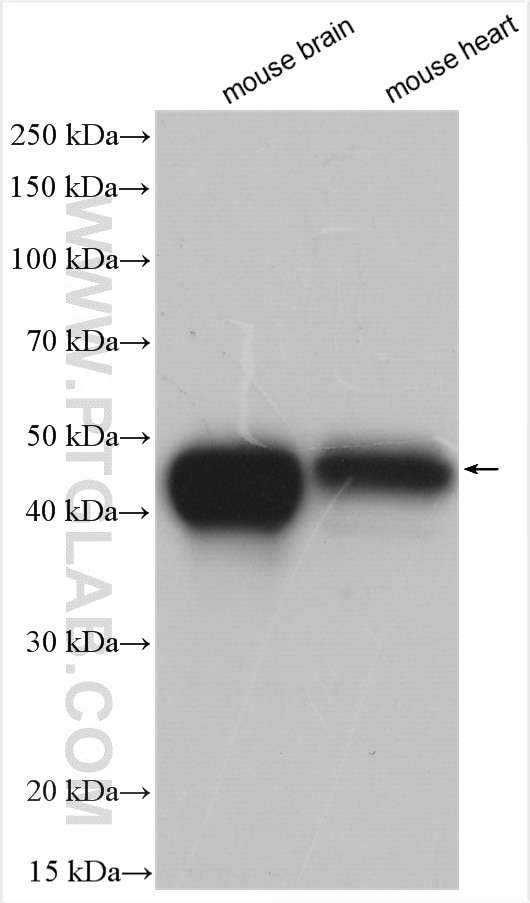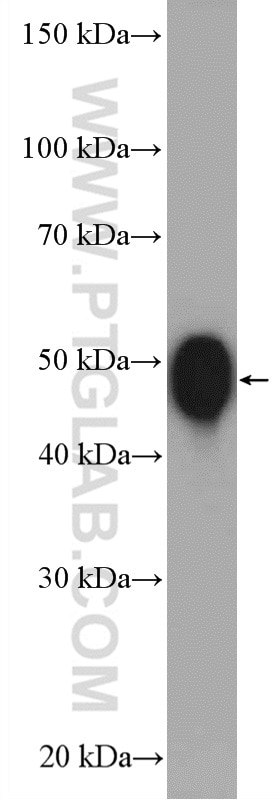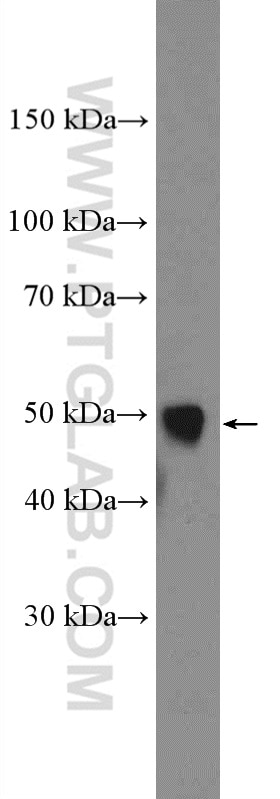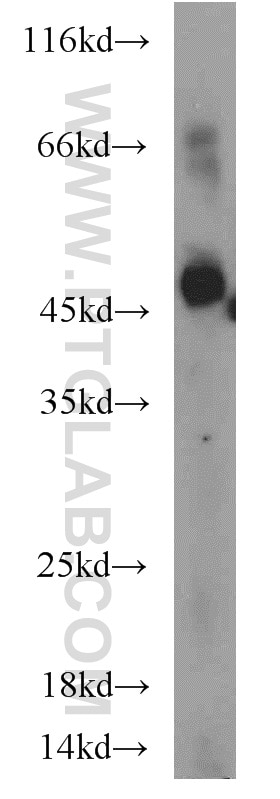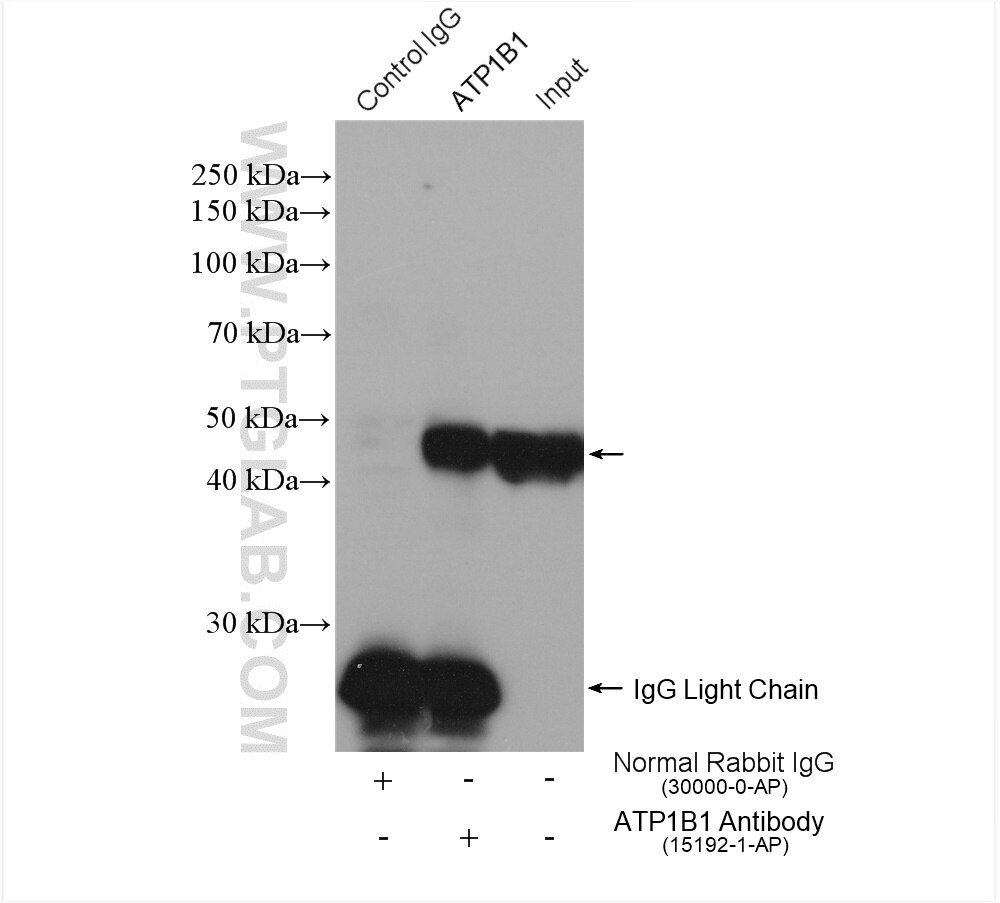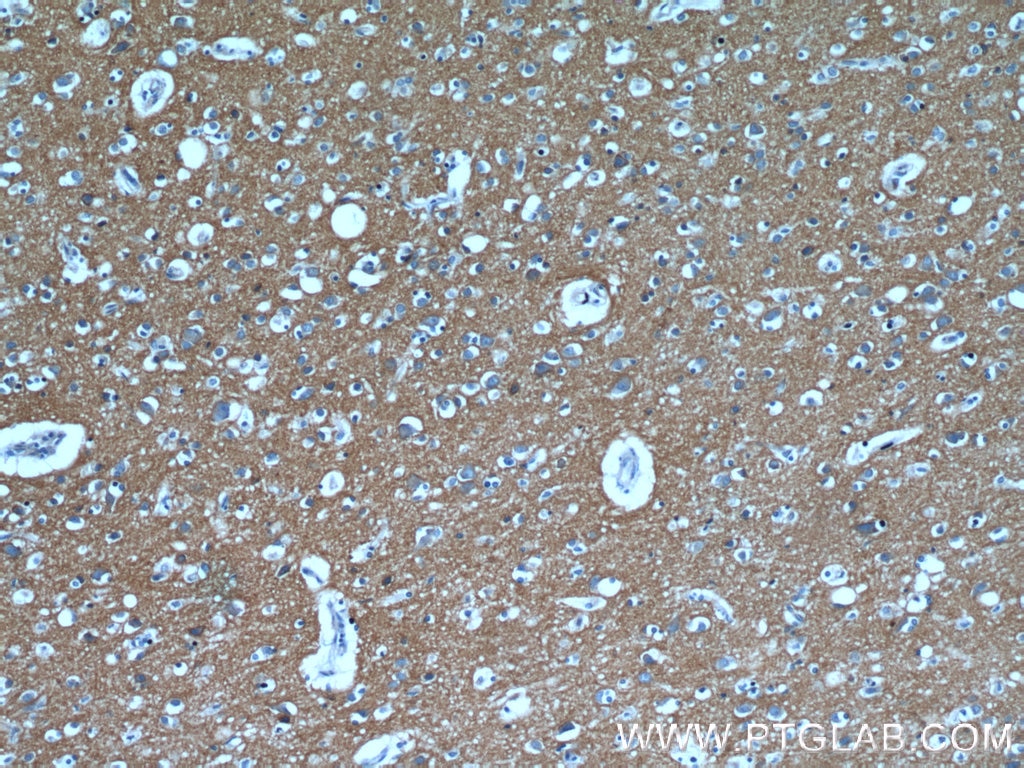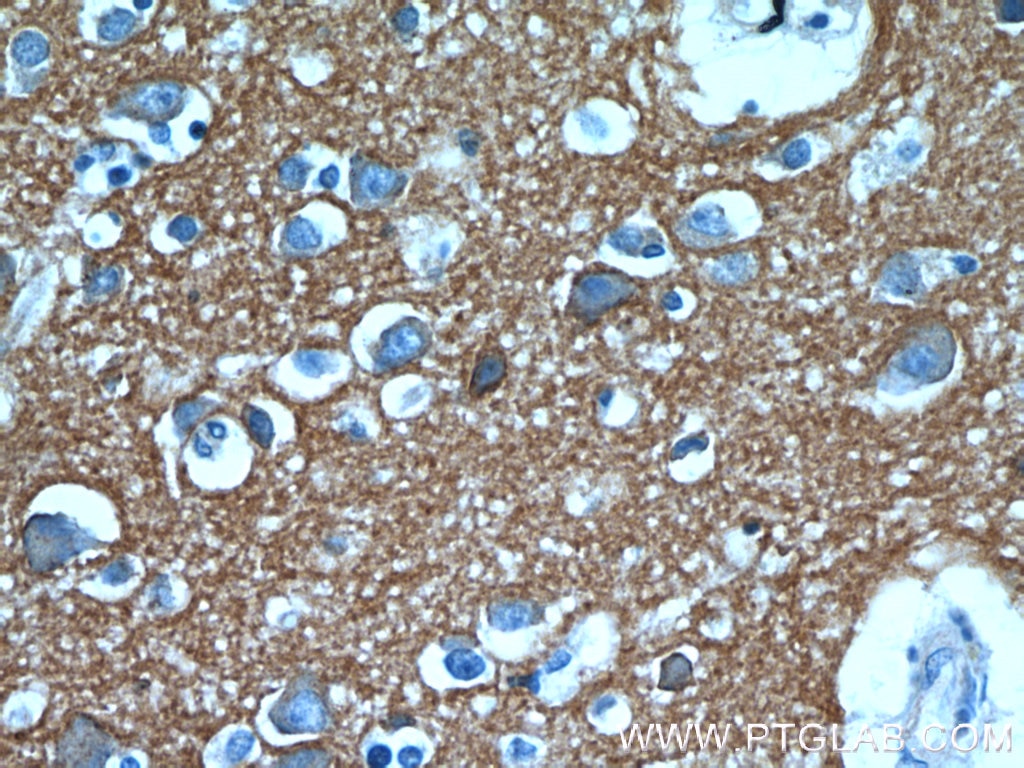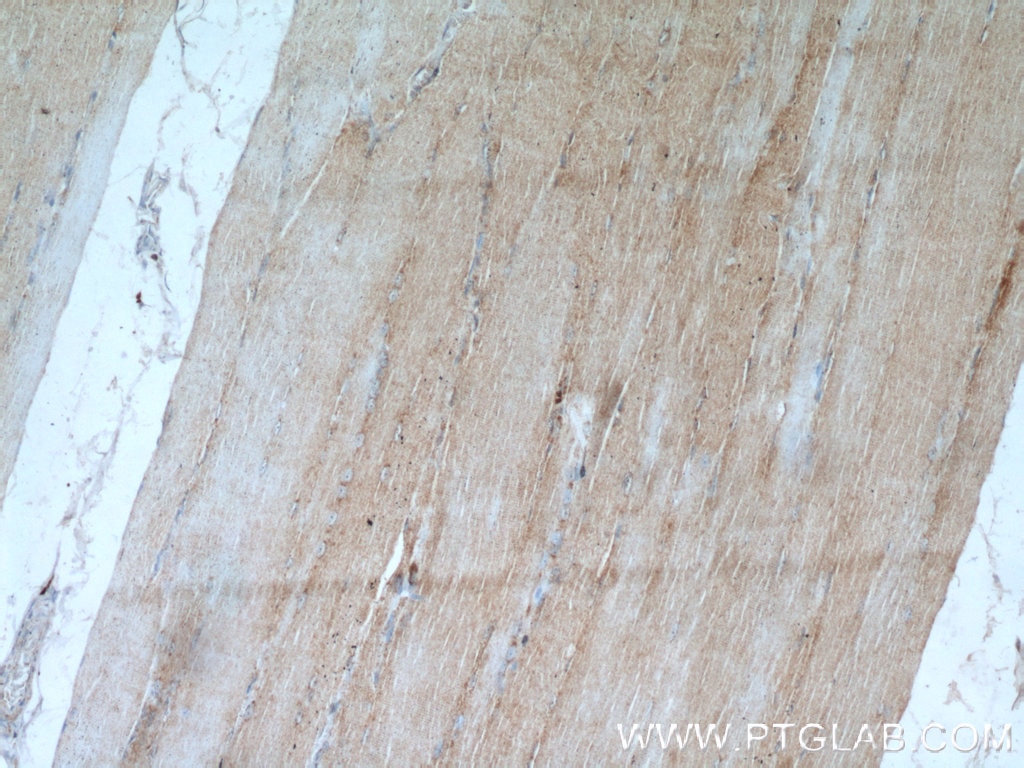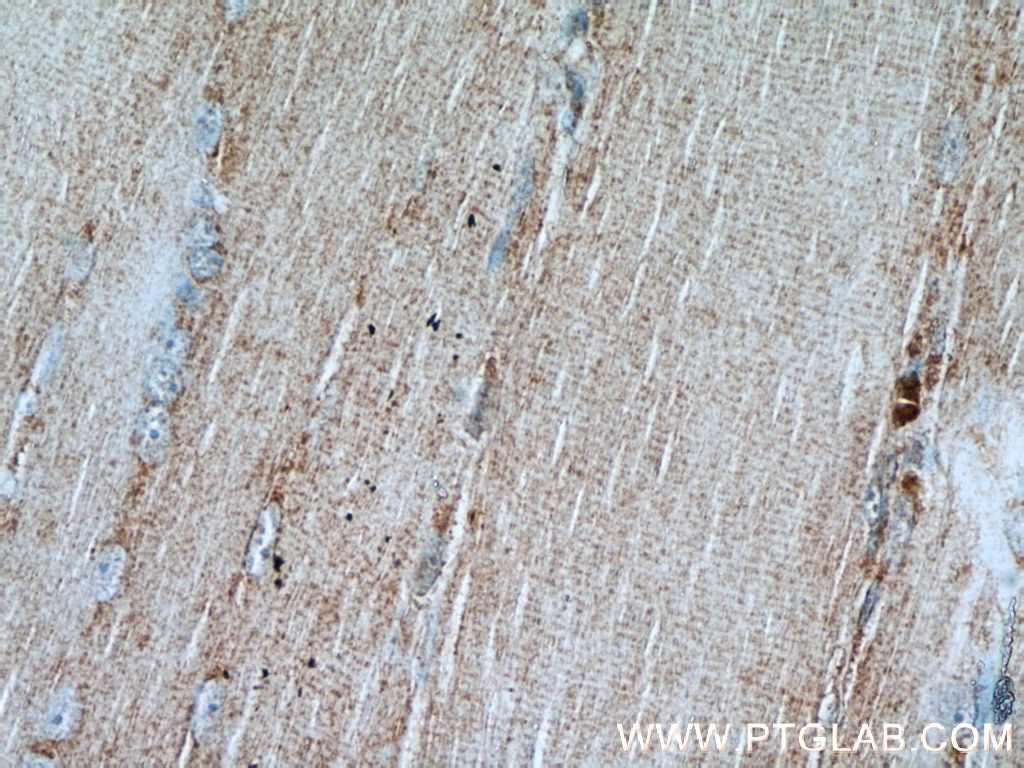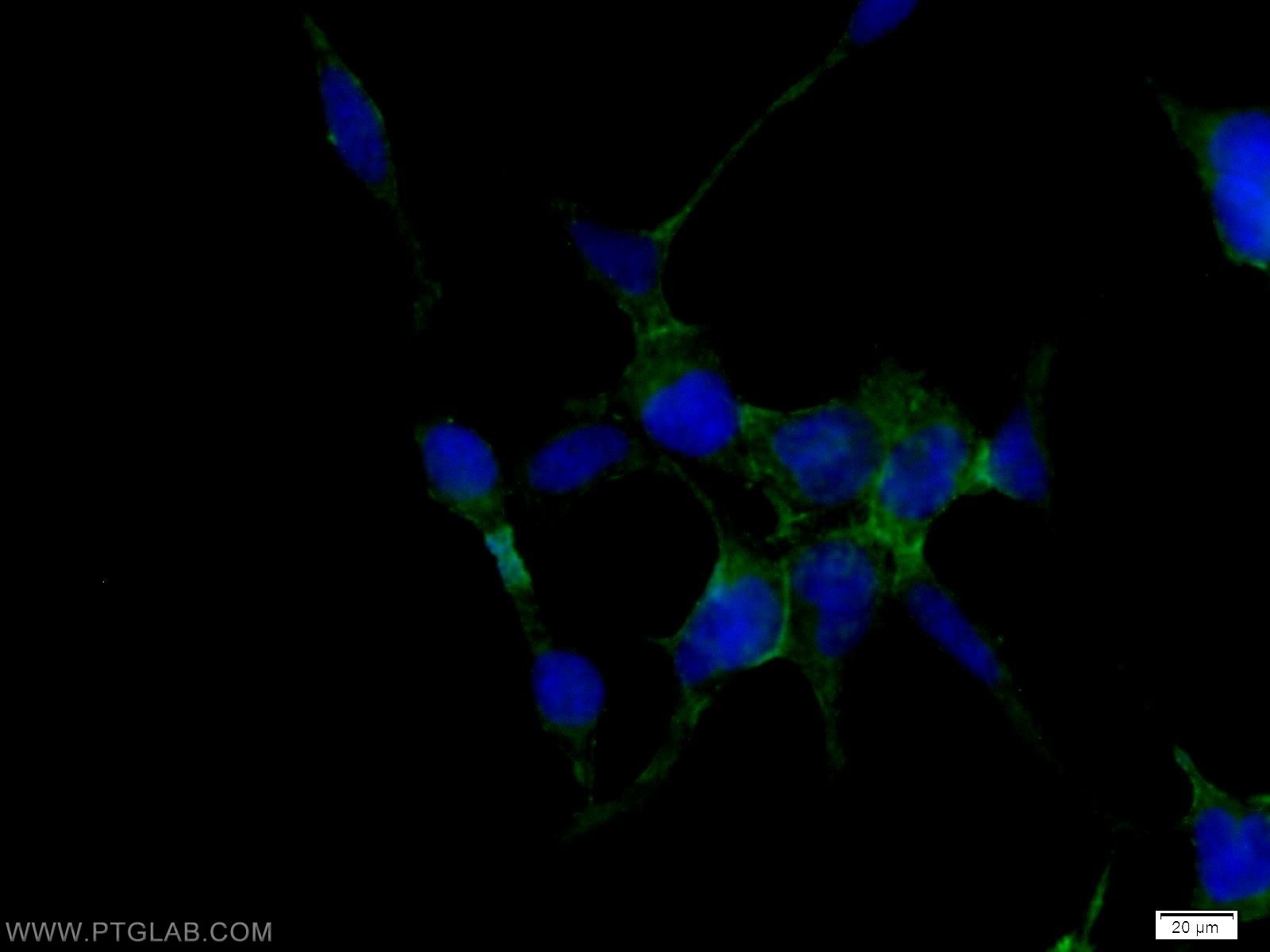Anticorps Polyclonal de lapin anti-ATP1B1
ATP1B1 Polyclonal Antibody for WB, IHC, IF/ICC, IP, ELISA
Hôte / Isotype
Lapin / IgG
Réactivité testée
Humain, souris et plus (1)
Applications
WB, IHC, IF/ICC, IP, ELISA
Conjugaison
Non conjugué
N° de cat : 15192-1-AP
Synonymes
Galerie de données de validation
Applications testées
| Résultats positifs en WB | tissu cérébral de souris, tissu cardiaque de souris, tissu cardiaque humain, tissu cérébral humain |
| Résultats positifs en IP | tissu cérébral de souris, |
| Résultats positifs en IHC | tissu cérébral humain, tissu de muscle squelettique humain il est suggéré de démasquer l'antigène avec un tampon de TE buffer pH 9.0; (*) À défaut, 'le démasquage de l'antigène peut être 'effectué avec un tampon citrate pH 6,0. |
| Résultats positifs en IF/ICC | cellules HEK-293 |
Dilution recommandée
| Application | Dilution |
|---|---|
| Western Blot (WB) | WB : 1:1000-1:8000 |
| Immunoprécipitation (IP) | IP : 0.5-4.0 ug for 1.0-3.0 mg of total protein lysate |
| Immunohistochimie (IHC) | IHC : 1:20-1:200 |
| Immunofluorescence (IF)/ICC | IF/ICC : 1:10-1:100 |
| It is recommended that this reagent should be titrated in each testing system to obtain optimal results. | |
| Sample-dependent, check data in validation data gallery | |
Applications publiées
| WB | See 11 publications below |
| IHC | See 1 publications below |
| IF | See 2 publications below |
Informations sur le produit
15192-1-AP cible ATP1B1 dans les applications de WB, IHC, IF/ICC, IP, ELISA et montre une réactivité avec des échantillons Humain, souris
| Réactivité | Humain, souris |
| Réactivité citée | rat, Humain, souris |
| Hôte / Isotype | Lapin / IgG |
| Clonalité | Polyclonal |
| Type | Anticorps |
| Immunogène | ATP1B1 Protéine recombinante Ag7279 |
| Nom complet | ATPase, Na+/K+ transporting, beta 1 polypeptide |
| Masse moléculaire calculée | 35 kDa |
| Poids moléculaire observé | 45-52 kDa |
| Numéro d’acquisition GenBank | BC000006 |
| Symbole du gène | ATP1B1 |
| Identification du gène (NCBI) | 481 |
| Conjugaison | Non conjugué |
| Forme | Liquide |
| Méthode de purification | Purification par affinité contre l'antigène |
| Tampon de stockage | PBS with 0.02% sodium azide and 50% glycerol |
| Conditions de stockage | Stocker à -20°C. Stable pendant un an après l'expédition. L'aliquotage n'est pas nécessaire pour le stockage à -20oC Les 20ul contiennent 0,1% de BSA. |
Informations générales
ATP1B1 is one of beta subunits of the Na+/K+ ATPase and responsible for formation and structural integrity of the Na+/K+ ATPase. The Na+/K+ ATPase is a plasma membrane pump consisting of alpha, beta, and gamma subunits. At least four of Na+/K+-ATPase beta subunits (β1, β2, β3, β4) have been identified in mammalian cells; the β1-subunit (ATP1B1) is the most ubiquitous. The Na+/K+ ATPase β subunits have multiple N-glycosylation sites. The predicted MW of ATP1B1 is 35 kDa, while it migrates around 40-52 kDa due to the variable glycosylation. (PMID: 10896885, 17714085)
Protocole
| Product Specific Protocols | |
|---|---|
| WB protocol for ATP1B1 antibody 15192-1-AP | Download protocol |
| IHC protocol for ATP1B1 antibody 15192-1-AP | Download protocol |
| IF protocol for ATP1B1 antibody 15192-1-AP | Download protocol |
| IP protocol for ATP1B1 antibody 15192-1-AP | Download protocol |
| Standard Protocols | |
|---|---|
| Click here to view our Standard Protocols |
Publications
| Species | Application | Title |
|---|---|---|
J Immunol Inducible ATP1B1 Upregulates Antiviral Innate Immune Responses by the Ubiquitination of TRAF3 and TRAF6. | ||
Front Pharmacol High-Salt Attenuates the Efficacy of Dapagliflozin in Tubular Protection by Impairing Fatty Acid Metabolism in Diabetic Kidney Disease | ||
Int J Mol Sci RBM20 Regulates CaV1.2 Surface Expression by Promoting Exon 9* Inclusion of CACNA1C in Neonatal Rat Cardiomyocytes. | ||
Obesity (Silver Spring) 27-Hydroxycholesterol Inhibits Sterol Regulatory Element-Binding Protein 1 Activation and Hepatic Lipid Accumulation in Mice. | ||
Exp Eye Res Pathomechanism of mutated and secreted retinoschisin in X-linked juvenile retinoschisis. |
